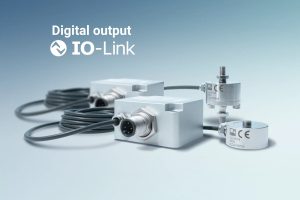Like automation, Contrinex sensors, available from PLUS Automation, are used in a wide variety of applications, and in this installation are trusted to ensure the safe and reliable control of weathertight doors on shipping.
Customer application
On ships, water-tight doors rely upon compressing seals around the perimeter of their frame, when they close. Double-acting hydraulic cylinders are used to open and close multiple linked latches that secure the doors when closed, maintaining their correct fit against the seals.
Designers required an affordable and highly reliable means of confirming the status of the latches, which would withstand the aggressive marine environment, being resistant to seawater, corrosion, vibrations and shock.
Contrinex has the advantage of offering a range of ‘Maritime’ inductive sensors which are approved to the DNVGL-CG-0339 environmental test specification for equipment to be installed on ships and offshore units. For example, the sensor’s EMC protection meets maritime requirements, particularly regarding power supply variations and low-frequency immunity, as well as being highly corrosion resistant, and IP68/IP69K rated.
DNV is an internationally accredited certification body that establishes and maintains technical standards for the construction and operation of ships and other offshore mobile structures in international waters. DNV is authorized by 130 maritime administrations to perform certification or verification on their behalf.
Customer solution
A high-pressure rated inductive sensor was selected which is capable of operating in installations of up to 500 bar (7,255 psi) and at a peak pressure of 800 bar (11,603 psi). The sensors are embedded into the side of the double-acting hydraulic cylinders which drive the door’s power locking mechanisms. The sensors are located at either end of the cylinder to monitor the presence of the metallic cylinder tie rod, as it reaches the end of its travel, showing whether the door locks are fully open or fully closed.
A member of Contrinex’s uniquely robust ‘700 Series’ of inductive sensors, the sensor features a front face and cylindrical housing which is machined from a single piece of stainless steel. It’s thick front face provides extraordinary abrasion resistance and the sensor’s unique technology gives it unmatched abilities to resist shock and impact damage. This impact resistance is typically demonstrated by showing how a sensor survives being used to hammer nails into a wooden block.
In the Maritime range of sensors, V4A/ AISI 316L stainless steel is used to provide high corrosion resistance to seawater and a salt-laden atmosphere. The sensor’s location inside metal doors on the perimeter of ships also meant that their wide temperature operating range (-25°C to +70°C) and Contrinex’s industry-leading temperature stability and temperature-resistance is important for reliable service.
The sensor also contains the IO-Link communication protocol so that parameters can be auto-updated from the PLC to a new sensor when it is installed. IO-Link is also ideal for implementing the sensors into Industrial IoT (IIoT) and Industry 4 systems, for example for the continuous monitoring of sensor status.
Combining exceptional durability in harsh environments with extended working life, Contrinex’s DNVGL-approved inductive sensors are an affordable, risk-free option for marine systems integrators and equipment designers.

 Instrumentation Monthly Test | Measurement | Control
Instrumentation Monthly Test | Measurement | Control









